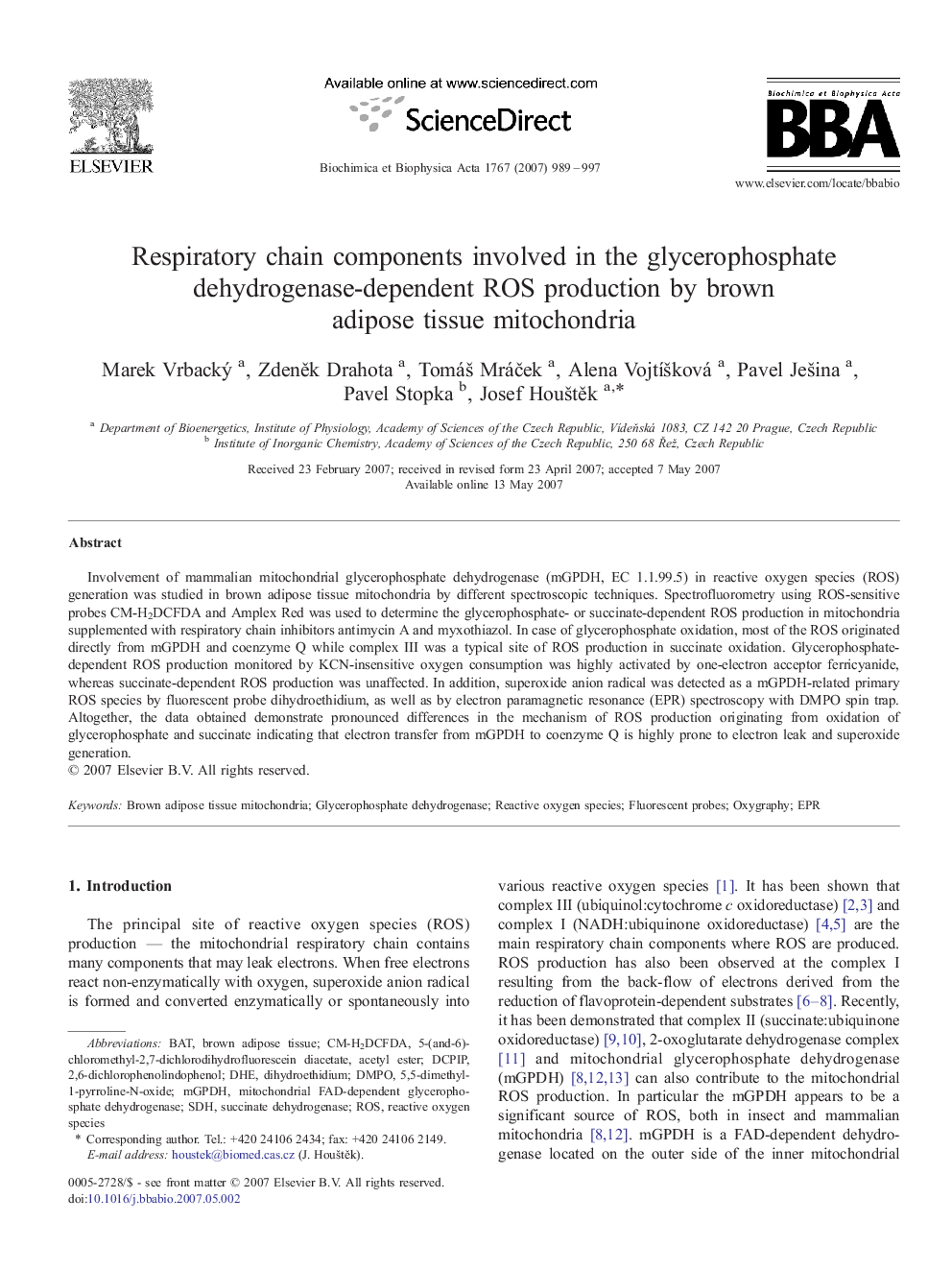| Article ID | Journal | Published Year | Pages | File Type |
|---|---|---|---|---|
| 1943471 | Biochimica et Biophysica Acta (BBA) - Bioenergetics | 2007 | 9 Pages |
Involvement of mammalian mitochondrial glycerophosphate dehydrogenase (mGPDH, EC 1.1.99.5) in reactive oxygen species (ROS) generation was studied in brown adipose tissue mitochondria by different spectroscopic techniques. Spectrofluorometry using ROS-sensitive probes CM-H2DCFDA and Amplex Red was used to determine the glycerophosphate- or succinate-dependent ROS production in mitochondria supplemented with respiratory chain inhibitors antimycin A and myxothiazol. In case of glycerophosphate oxidation, most of the ROS originated directly from mGPDH and coenzyme Q while complex III was a typical site of ROS production in succinate oxidation. Glycerophosphate-dependent ROS production monitored by KCN-insensitive oxygen consumption was highly activated by one-electron acceptor ferricyanide, whereas succinate-dependent ROS production was unaffected. In addition, superoxide anion radical was detected as a mGPDH-related primary ROS species by fluorescent probe dihydroethidium, as well as by electron paramagnetic resonance (EPR) spectroscopy with DMPO spin trap. Altogether, the data obtained demonstrate pronounced differences in the mechanism of ROS production originating from oxidation of glycerophosphate and succinate indicating that electron transfer from mGPDH to coenzyme Q is highly prone to electron leak and superoxide generation.
